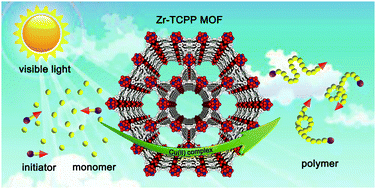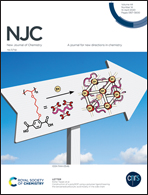Visible-light-induced controlled radical polymerization of methacrylates mediated by zirconium-porphryinic metal–organic frameworks†
Abstract
A zirconium-porphryinic metal–organic framework (MOF) mediated photo-induced atom transfer radical polymerization reaction was investigated. By means of tetracarboxylic porphyrin ligands (H2-TCPP or Zn-TCPP) as photoactive units and Zr6-clusters as inorganic building blocks, two zirconium-porphryinic MOFs with csq topology were synthesized and characterized. In view of the broad, strong visible-light absorption, and good ligand-based photoinduced charge generation and migration, zirconium-porphryinic MOFs served as effective photoreducing agents to activate a Cu(II) complex for initiating polymerization of methacrylates through a single electron transfer process. The kinetic study suggested that the established polymerization system showed characteristics of controlled radical polymerization. The resulting polymers exhibited controlled molecular weights, low polydispersity index and high retention of chain-end groups. In addition, this photopolymerization process can be easily started or stopped by light switching. The study suggests the potential application of heterogeneous photoactive MOFs for synthesis of well-designed polymers.



 Please wait while we load your content...
Please wait while we load your content...